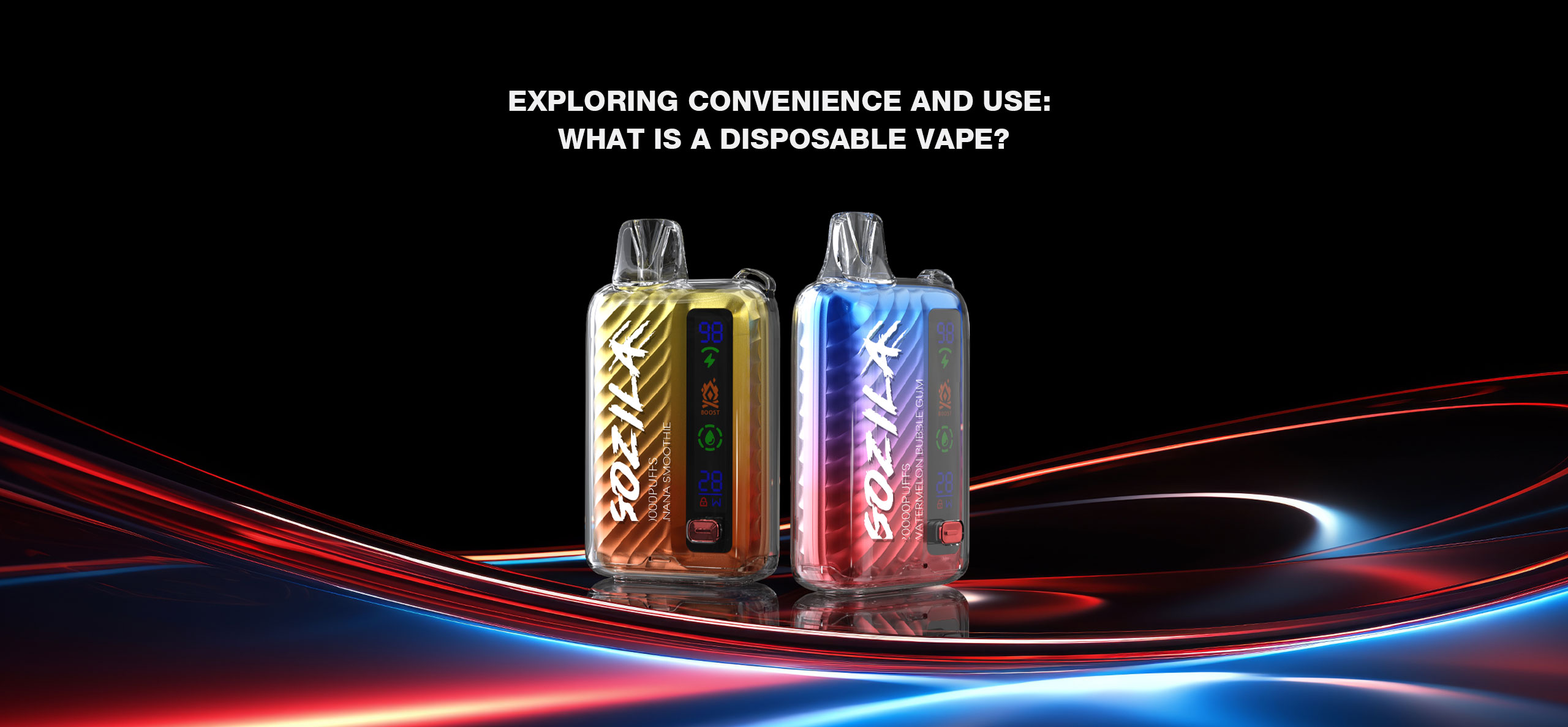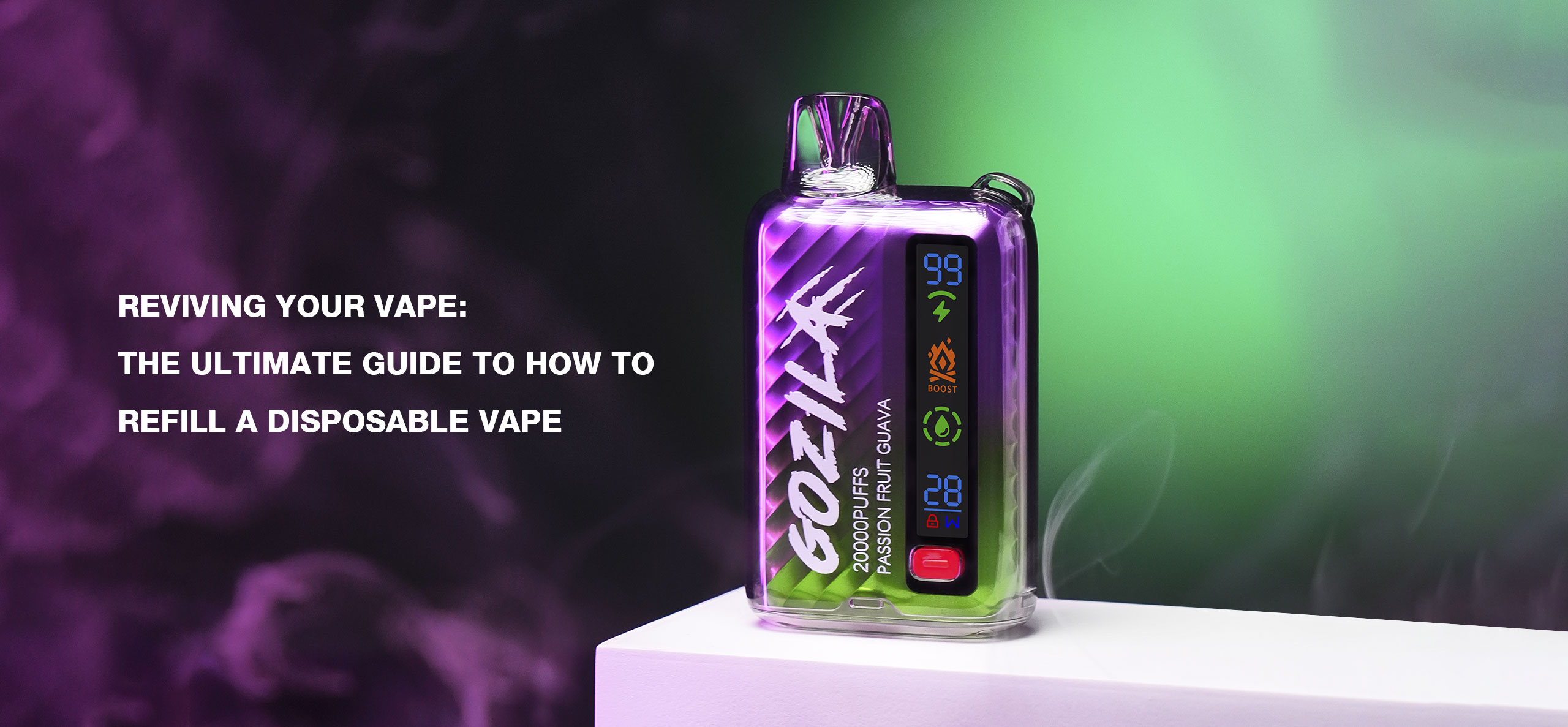WARNING: This product contains nicotine. Nicotine is an addictive chemical.
The world of vaping has witnessed tremendous evolution over the years, with a variety of devices catering to different preferences and needs. Among these innovations, disposable vapes have emerged as a popular choice for many, combining convenience with functionality. In this article, we delve into what is a disposable vape, compare it with traditional cigarettes, and discuss the health considerations associated with its use.
Inside a disposable vape, you’ll find several key components that work together to provide a convenient and straightforward vaping experience:
Battery: The heart of a disposable vape is its battery, which powers the entire device. Despite their small size, these batteries are potent enough to ensure the device can last until the e-liquid is depleted. They’re specifically designed to match the lifespan of the pre-filled e-liquid, ensuring no component goes to waste.
Atomizer: The atomizer is the heating element responsible for vaporizing the e-liquid. When activated, usually by inhaling through the mouthpiece, the battery sends a current to the atomizer, which then rapidly heats up to convert the liquid into vapor. This process is key to delivering the flavors and nicotine that users enjoy.
Cartridge: Disposable vapes contain a small reservoir or chamber filled with e-liquid, which is a mixture of propylene glycol (PG), vegetable glycerin (VG), flavorings, and often nicotine. The reservoir’s capacity varies but is generally designed to offer a comparable number of puffs to multiple packs of cigarettes, providing a satisfying and long-lasting experience.
Mouthpiece: The mouthpiece, or the part of the device a user inhales from, is designed for comfort and ease of use. It’s through this component that the vapor travels from the atomizer to the user’s mouth.
Watch the video below.
The composition of disposable vapes and cigarettes reveals the fundamental differences in their design and the substances they introduce to the user. Disposable vapes are engineered to deliver nicotine and flavor through vapor, using a battery-powered heating mechanism that vaporizes a liquid solution. This technology contrasts sharply with cigarettes, which rely on the combustion of tobacco leaves to deliver nicotine through smoke inhalation. The absence of combustion in vaping means that disposable vapes do not produce tar or carbon monoxide, two of the most harmful constituents of cigarette smoke. Furthermore, the use of a liquid reservoir in vapes allows for a diverse range of flavors, offering users a variety of sensory experiences that cigarettes cannot match.
On the other hand, cigarettes contain tobacco, a natural product that, when burned, releases a complex cocktail of chemicals, many of which are known to be toxic and carcinogenic. The presence of a filter in cigarettes is a nod to the need to reduce the harm of these substances, though it’s effectiveness is limited. The comparison between the two underscores a shift in nicotine consumption, from the traditional method of smoking tobacco to the more technologically advanced and potentially less harmful method of vaping. This shift reflects not only advancements in technology but also a growing awareness and concern over the health impacts of smoking, driving the search for less harmful alternatives.
When delving into the distinctions between disposable vapes and traditional cigarettes, it becomes evident that the lack of combustion in vapes is a pivotal factor. This absence of combustion means that users are not exposed to smoke, tar, or ash, which are inherent to cigarette smoking. This not only changes the user experience significantly by eliminating the odor and residue associated with smoking but also reduces the intake of harmful combustion by-products. The vapor produced by disposable vapes is perceived to carry fewer health risks compared to the smoke from burning tobacco, making vaping an appealing option for those concerned about the health implications of smoking.
Moreover, the array of flavors available in disposable vapes greatly surpasses the taste options offered by cigarettes, providing an enhanced sensory experience that can cater to individual preferences. This variety can be particularly enticing for those looking to switch from smoking to vaping, as it allows for a more personalized and enjoyable experience. Additionally, the convenience factor of disposable vapes, with their ready-to-use design and lack of required upkeep, positions them as a practical alternative for former smokers. This ease of use, combined with the reduced health risks and enhanced flavor options, makes disposable vapes a compelling choice for individuals seeking to transition away from traditional tobacco products.

The health implications of disposable vapes compared to traditional smoking have been a subject of much debate and research. While it is widely acknowledged that disposable vapes do not contain the tar and carbon monoxide found in cigarette smoke—two of the most harmful components associated with smoking—they do still deliver nicotine, a highly addictive substance. The absence of combustion in vaping means that users are not exposed to the myriad of carcinogens that are released when tobacco is burned. Consequently, many health experts consider vaping to be a less harmful alternative to smoking, particularly for individuals who are trying to quit smoking. However, it’s important to note that “less harmful” does not mean “harm-free,” as vaping still poses certain health risks, primarily due to the presence of nicotine and other substances found in vape liquids.
Furthermore, the long-term health effects of vaping are not yet fully understood, given that it is a relatively recent phenomenon compared to cigarette smoking. Early research suggests that vaping may have less severe impacts on lung health and overall well-being than smoking, but conclusive longitudinal studies are still needed. Additionally, the market’s variety of disposable vape products, each with its own set of ingredients and nicotine concentrations, adds another layer of complexity to assessing their health impacts. It is crucial for users to remain informed and cautious, recognizing that while disposable vapes may offer a less harmful alternative to cigarettes, they are not entirely without risk. Public health agencies and researchers continue to study and monitor the effects of vaping, aiming to provide clearer guidance for individuals considering vaping as an alternative to smoking.

The article provides an in-depth exploration of disposable vapes, emphasizing their design as non-rechargeable, user-friendly devices pre-filled with e-liquid, making them a convenient choice for both novice and experienced vapers. It contrasts disposable vapes with traditional cigarettes, highlighting the absence of combustion, smoke, tar, and ash in vaping, which offers a less harmful experience with a variety of flavors, unlike the limited taste profile of cigarettes. The article also delves into the health implications of disposable vapes, acknowledging their lower risk compared to smoking due to the lack of harmful combustion by-products, but also noting the potential health concerns associated with nicotine and other chemicals present in vapes. The discussion underscores the importance of understanding the components and health impacts of disposable vapes for making informed decisions about their use.
If you want to know more, please refer to this article:
https://keystonevape.com/best-vape/the-best-disposable-vapes-2024-you-cant-miss/
